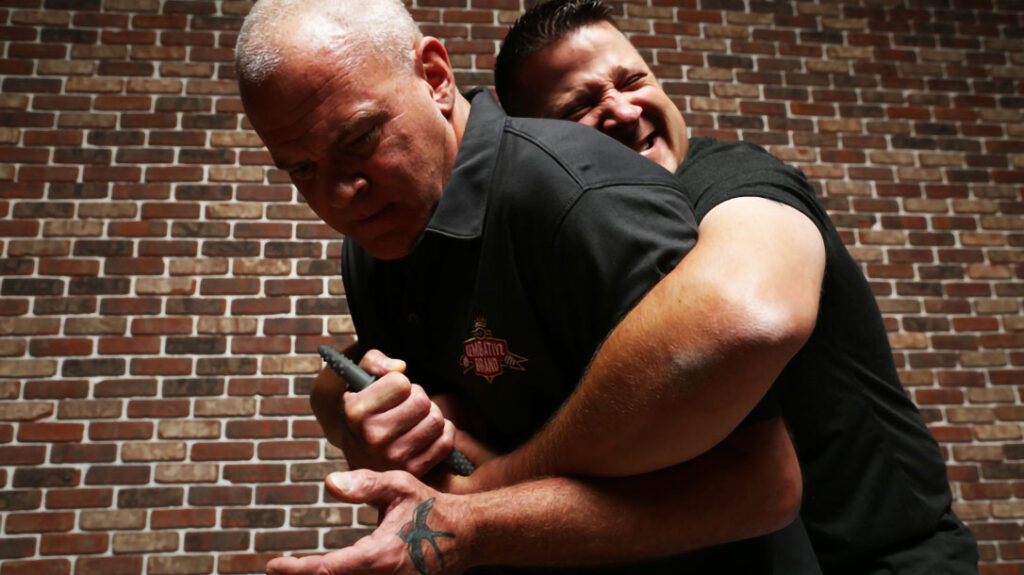When faced with a threatening or potentially deadly situation, the human body releases a hormone through the adrenal gland that can literally and instantly transform a calm person into a highly reactive, supercharged individual, allowing them to overcome the potentially deadly scenario. This hormone is, of course, adrenaline.
Adrenaline – Understanding the Ups and Downs
Being “adrenalized” is a slang term used by many people when they are pumped up or, more specifically, energized by stimulants like caffeine or sugar, or when feeling excited by something that has happened positively in their life. However, real adrenaline (as in the hormone in the body) is much more complex in definition. This “natural wonder” hormone prepares the human body for fight or flight, meaning if a person is faced with a dangerous situation, they will either flee or fight the danger confronting them.
Advertisement — Continue Reading Below
However, this rapid change to a normally stable body doesn’t always have a positive effect. In fact, too much adrenaline can begin to break down the very body it works to protect.
Here, we’ll explore this enigmatic material and examine its pros and cons during both a high-stress situation and its aftereffects on the human body. When is it needed? How can you manage it, and when does it become too much for your body to handle? These very important questions will be answered below, so one can fully understand, for example, how an average man can lift a two-ton car off a trapped victim.

Advertisement — Continue Reading Below
Adrenaline Defined
Biologically speaking, adrenaline (or epinephrine) is a hormone found in your adrenal glands, which are located on the top of the kidneys. This hormone is secreted and enters the bloodstream when a sudden, scary, or stressful situation occurs. These situations could take many forms. From a confrontation with knife-wielding punks on the street to a noise from a door opening when you’re alone at home, along with more innocent types of stress, such as taking an important test or getting on stage to perform a song for the first time.
Adrenaline gets your body ready to handle the stress, whether it means facing it head-on or, if need be, escaping the situation or surviving without confrontation.
Stress Situations
When a stressful situation occurs, within a few seconds to a minute or two, your body goes through some dramatic physical changes. Almost immediately, air passages dilate to allow more air to be taken in. This increases oxygen flow to the muscles, which aids in both fight and flight responses. Conversely, blood vessels contract and redirect blood to major muscle groups like your quadriceps and biceps, along with your heart and lungs (to handle increased breathing).
Advertisement — Continue Reading Below
Naturally, your heart rate increases, which sends blood (and needed oxygen) forcibly to needed muscles and tissues. Glucose is released simultaneously from the liver, which provides the body with extra energy by increasing blood sugar levels in the bloodstream.
Other effects include dilation of the eyes for better visibility, even in the dark, and one of the most important effects is the reduction of the perception of pain. This stress-induced analgesia, as it’s called, can allow you to fight hard and continuously, even when injured, without pain being detected and hampering your ability to save yourself.

Advertisement — Continue Reading Below
Bodily Effects
Except for a car accident, medical emergency, and perhaps crossing paths with a vicious animal, few situations are more stressful than a possible fight with a dangerous and enraged person on the street or a face-to-face encounter with a home invader. Both situations can raise your stress level to a very high level in an almost instantaneous amount of time. What’s interesting and not known to many is that when adrenaline is released in the body, it can cause symptoms that aren’t usually associated with that “adrenaline rush” but are more in line with the characteristics of fear or apprehension.
The body can become shaky or nervous, producing that “jelly” effect in the legs as if they’re weak and may need to sit down. Additionally, your body can tremble and shake, and you may even feel dizzy or lightheaded at the first sign of conflict. Increased sweating can occur, so much so that your shirt may be saturated with moisture within only a few seconds when adrenaline is released. All these seemingly odd symptoms of what, perhaps in your mind, should be a power surge for you, are completely normal and are just your body’s way of getting ready to either fight or flee.

Advertisement — Continue Reading Below
The Good Effect
When the face-to-face ends and punches are thrown, the “good” effects of adrenaline take center stage. Punches and kicks, which normally would hurt immensely, are not felt to even close to the same degree, if at all, when adrenalized. Your strength increases and is especially useful in a grappling situation on the ground or when someone has their hands gripped hard on your chest. Even if you attempt a throw to incapacitate your foe, lifting him upward and tossing him down hard will seem much easier when your muscles are “juiced” with adrenaline. Even cuts from knives and non-life-threatening puncture wounds for some cause little pain during a skirmish and may only be detected after the fight ends and the adrenaline wears off.
Additionally, if you choose to flee instead of fighting (which is a very good choice in some circumstances), adrenaline surging through your muscle fibers will help you run much faster than normal and for longer distances if needed.
Misplaced Adrenaline
After a physical conflict with an individual (or many) or after escaping from, let’s say, a group of local thugs, your body will take a bit of time for the adrenaline to wear off. But it will wear off. The glucose (sugar) in the bloodstream will burn off, and your body will reach a state of normalcy once again. However, there are times throughout your life when this may not occur, and that could have very bad consequences. This occurs if your body releases adrenaline under circumstances other than a life-or-death situation, such as emotional or mental stress.
Advertisement — Continue Reading Below
Any number of factors could lead to this condition, including your mind full of conflicting thoughts, high anxiety from work, school, or family issues, and emotional stress caused by the uncertainty of a new romantic relationship. When your mind can’t let these non-physical stress inducers go, then the body believes they are real and releases adrenaline to “handle” the situation. However, there is no true situation to handle, so that extra energy boost has no outlet, and thus you can become restless, irritable, and all-around unrelaxed for hours at a time until it fades.

The Downside
This condition, in which adrenaline is released but not used, is not harmful if it occurs only a few times here and there, but if uncontrolled and rampant, it can be highly damaging to your body. Constant surges of adrenaline can increase blood pressure, damage blood vessels, cause steady headaches, and even put you at risk of a heart attack or stroke. They say stress kills, and it’s entirely true.
Coming Down
When the fight or flight is over or when suffering from either mental or emotional high stress, there are some easy ways to calm your body down and revert to your normal level. The first and perhaps best technique is deep breathing. This can calm a person down within minutes if done properly. First, go to a peaceful or quiet location. This could be a secluded park, your backyard, or an unused room in your house. Then, breathe in through your nose and bring the air downward into your belly.
Slowly let your air out of your nose. Place one hand on your belly with the other on your chest and repeat the breathing exercise. Feel your hand on your belly rise and fall, as the one on your chest should only move slightly. Take three or more full breaths, and your body should be much calmer and more relaxed. Other options to reduce stress levels include meditation, doing yoga or performing a few Tai Chi exercises, as well as eating and drinking healthily (reduce your alcohol and caffeine intake) throughout your daily life.

Good or Bad?
There’s no doubt that adrenaline is advantageous when bad things go down, and it’s time to get physical. Your body produces and secretes this energizing hormone for a reason, and that’s to try to keep you alive for as long as possible during your lifetime. However, like many good things in life, moderation is the safe spot. Too much adrenaline (as well as too little) can have adverse effects on your health, and if you already have underlying medical conditions, adrenaline produced but without a release can potentially make your condition life-threatening. As mentioned, a stroke or a heart attack is a possible long-term result of adrenaline stress on the human body.
Adrenaline
Like the hair on your neck standing up or the feeling that something just doesn’t feel right, adrenaline is just another signal from your body that danger is near, and you need to face it with an increased surge of power or “beat feet” and flee to fight another day. If the former is chosen, you need to give the adrenaline its proper release. Fight relentlessly until you’ve overcome whatever physical obstacle is in your way. It’s intended for you to get the job done first and feel pain later, and that’s exactly what you need to do during a physical conflict. Nature wants you to survive, and it has given you this important tool to do just that. Like a transforming Hulk of a person, you need to use the adrenaline surge to its fullest or risk the chance of not coming home to your family alive and well.
WHY OUR ARTICLES/REVIEWS DO NOT HAVE AFFILIATE LINKS
Affiliate links create a financial incentive for writers to promote certain products, which can lead to biased recommendations. This blurs the line between genuine advice and marketing, reducing trust in the content.


